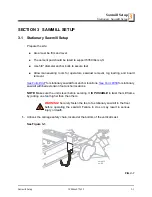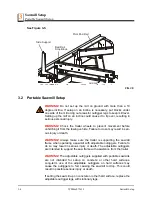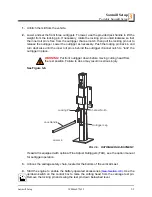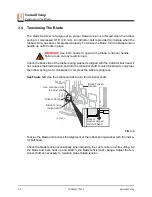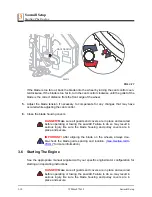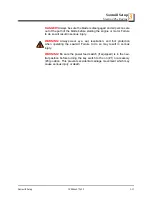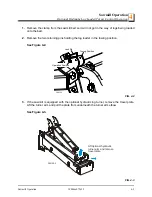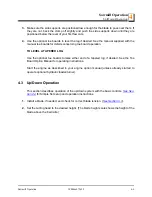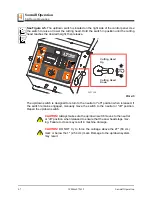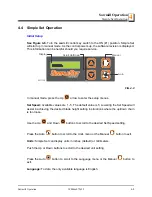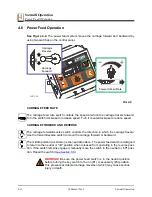
Sawmill Operation
Loading, Turning And Clamping Logs
4
4-3
WMdoc072619
Sawmill Operation
4.
Lower the turner lever to completely lower the turner arm. Notice that after the turner arm
is all the way down, the side support braces will begin to lower. Release the turner lever
after the turner arm is lowered, but before the side supports begin to lower. This stops the
log being loaded from damaging the turner and/or falling off the side of the sawmill.
5.
When raising the turner lever, the side supports rise first. After reaching a fully vertical
position, the turner arm will engage and start to rise.
6.
Manually lower the log loader so it rests on the ground.
CAUTION!
Be careful when manually lowering the log loader. Do not
drop the loader onto the ground or perform any action which might
break the velocity fuse valves on the loader cylinders. These valves
control hydraulic flow and are necessary to prevent the loading arm
from collapsing during use.
7.
Place the retaining pins in the operation position holes.
8.
The front and rear toe boards should be below bed level. Once a tapered log has been
loaded, the front or rear end of the log may be lifted to parallel the heart of the log to the
path of the blade.
4.2
Loading, Turning And Clamping Logs
TO LOAD LOGS
1.
Start the engine and move the saw carriage to the front end of the frame.
CAUTION!
Before loading a log, be sure the cutting head is moved far
enough forward so the log does not hit it. Failure to do so may result in
machine damage.
CAUTION!
Be sure the log clamp, pivot rails, turning arm and toe
boards are adjusted out of the path of the log before loading a log onto
the bed. Failure to do so may result in machine damage or cause mis-
alignment.
2.
Raise the side supports on the sawmill bed to prevent the log from falling off the side of
the bed.
Standard Log Ramps (See next page for optional Hydraulic Loader operation):


